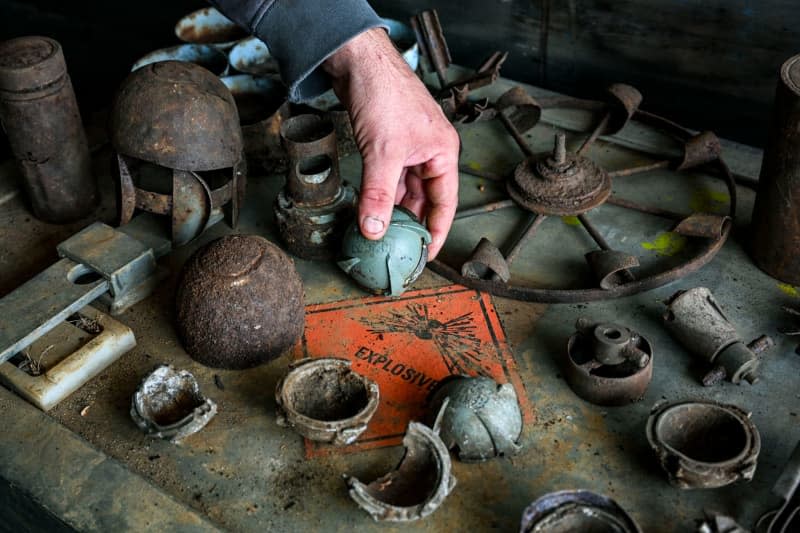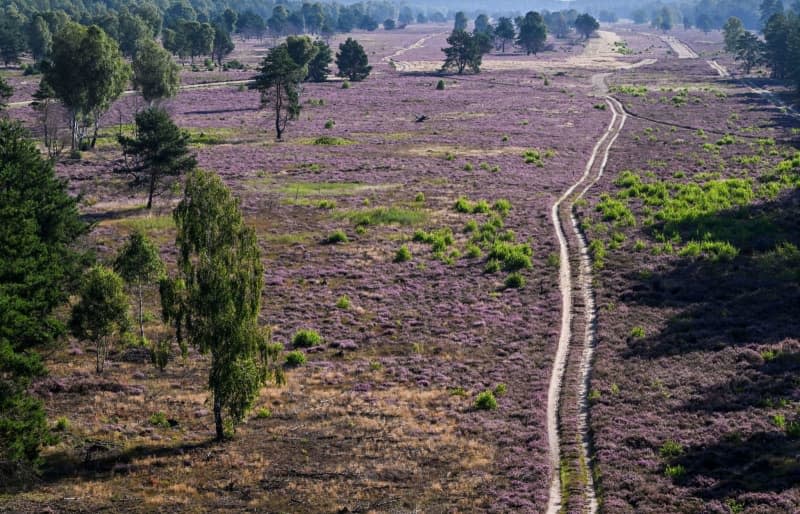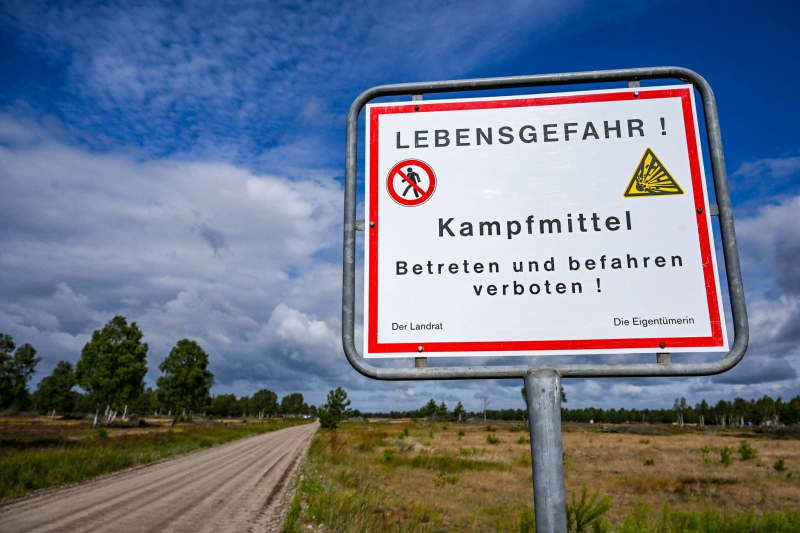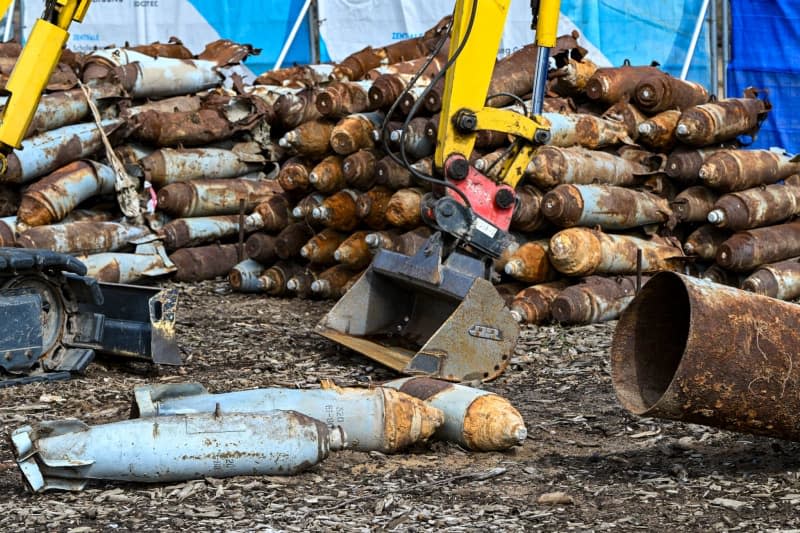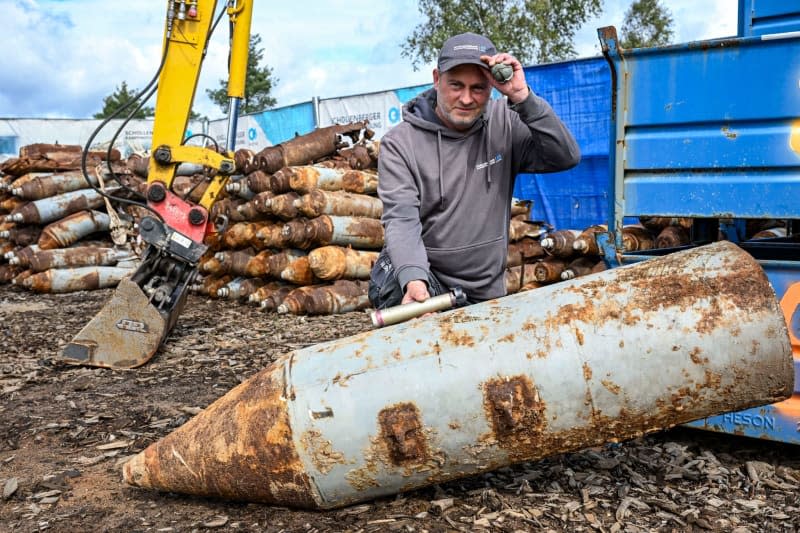Removing Soviet-made cluster bombs in Germany is an uphill battle

The metal detector beeps incessantly just above the forest floor, as workers comb the area on behalf of the federal government, searching metre by metre for insidious weapons of war: cluster bombs.
The former Soviet military training area in the Kyritz-Ruppiner Heide heathland between Berlin and Hamburg has to be cleared of these old, deadly munitions found nowhere else in Germany. Cluster bombs are considered a particularly insidious weapon of war and have been internationally outlawed.
Clearing the cluster munitions on the site in north-east Germany, which became known nationwide as the Bombodrom, is to be completed by 2025. But the timetable is shaky.
"We may not make it," says Rainer Entrup, head of the West Brandenburg Federal Forestry Organization. He is in charge of the area owned by the Federal Real Estate Agency. Around 200 men and women are working on the site to recover the munitions. The Soviet military used the former air-to-ground firing range for decades, during a time when the area was part of communist East Germany. Among other things, they practised dropping bombs from aircraft there and used Russian-style cluster munitions.
"Everything that the Russian army has had at its disposal in the last 40 years has been fired here. The site is completely full of metal," says Entrup.
The explorers, who first stake out exact plots on the ground to search for munitions, find many fragments of rockets and grenades, but also vast quantities of the still dangerous cluster munitions, which are the size of a tennis ball and look almost harmless from the outside.
"There's no end in sight," says Monty Neider from an explosive ordnance recovery company. The former electrician is the squad leader responsible for the ammunition store, where the explosive finds are partly stored in containers that protect them from heat.
Material is blown up almost every week. Explosive ordnance clearers from two specialist companies have already found around 6,000 pieces of cluster weapons on the 1,100-hectare suspected area, which has been searched since 2017. Armoured excavators are also being used. The costs so far? According to Entrup, around €200 million ($219 million) in total.
A debate has recently flared up about the use of cluster munitions in Russia's war against Ukraine. Cluster munitions are rockets and bombs that burst in the air above the target, releasing and scattering many small explosive devices over a large area.
They are particularly controversial because a significant proportion do not detonate but remain on the ground as unexploded ordnances, thus endangering the civilian population.
More than 10 years ago, Germany and more than 100 other countries signed a treaty to ban cluster munitions, known as the Oslo Convention. According to the German government, all Bundeswehr stocks of these weapons have since been destroyed.
In the Kyritz-Ruppiner Heide, delays are to be expected, as the head of the federal forestry operation, Entrup, says. "There are plenty of disruptive factors. You never know what you will find and whether trees will have to be felled again or procedures will change."
Two years ago, Germany's Foreign Ministry stated: "As the 10-year clearance obligation stipulated in the [Oslo] Convention expired at the end of 2020, Germany submitted an application for an extension until August 2025, which was authorized."
The former bombing range is remembered throughout Germany primarily for 17 years of civil protests. "No bombs" - these were the words that clusters of people once formed with their bodies. They were protesting against plans by the armed forces - or Bundeswehr - to use the area for air force training purposes after the withdrawal of Soviet troops.
In the summer of 2009, the protest movement could rejoice: "The heath is free." Franz Josef Jung, Germany's defence minister at the time, announced that the Bundeswehr was giving up the area in north-west Brandenburg. "I am glad that there is no war going on there," says District Administrator Ralf Reinhardt, referring to NATO military manoeuvres.
Almost the entire 120 square kilometres forest and heathland area is still closed due to the munitions contamination, but a small part of around 900 hectares is safely accessible to the public.
"In the past, the area has been very badly treated," says the district administrator. "The burden will remain in the ground for generations to come." This is because there is an obligation to extract cluster munitions at a depth of up to 30 centimetres - meaning that not all grenades and bombs can be found and rendered harmless.
"It remains a ticking time bomb," says Ulrike Laubenthal, chairwoman of the Peace Barn Association in Wittstock, who protested against the Bundeswehr's plans for years.
In the meantime, a 13-kilometres trail on the former military training area has been cleared for hiking, cycling and carriage rides. Day tourists visit the Kyritz-Ruppiner Heide - one of the largest heathland areas in Germany. It is in full purple bloom in August and September.
The Heinz Sielmann Foundation, which has taken over part of the natural landscape, calls the heathland a "place of tranquillity" decades after the aircraft noise. Around 2,000 species live there.
"Instead of fighter jets, mourning cloaks and blue butterflies now fly here," is how the foundation describes it.
